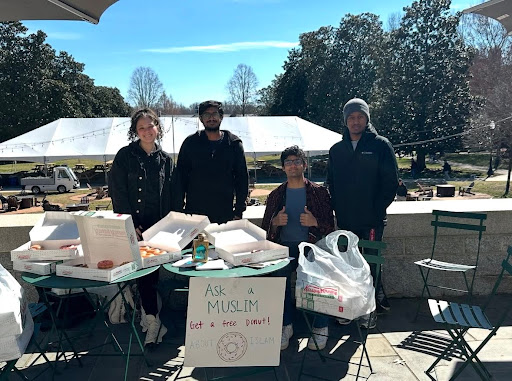Faculty and staff eagerly gathered in the ZSR Auditorium on Tuesday to meet new Creative Writing professor, L. Lamar Wilson, in an event centered around a screening of his documentary film in an award-winning PBS series, The Changing Same. The widely renowned multi-genre writer and filmmaker extended an intimate glance into some of his own work and his poet-scholar worldview.
The provoking presentation began with Wilson’s reading of a poem that provided context behind the film’s creation and featured location — his hometown of Marianna, Fla. The audience was guided into the swampy, provincial town, described by Wilson as being enveloped in racial terror from its dark past, where a black man named Claude Neal was brutally lynched in 1968.
After the poem concluded, lights dimmed, and serene and eerie scenery of the town flashed on the screen.
“Paranoia is a very healthy thing in a town like this. It may keep you alive,” Wilson said as the camera panned to him and then flashed to racist newspaper clippings of the lynching.
The next 24 minutes of the documentary followed his journey of running 14 miles through Marianna each year on the anniversary of Neal’s lynching, with the goal of unveiling its buried racist past that still lives on today.
Snippets of Wilson’s voice-over reading of his poem “Resurrection Sunday” and interviews with friends and residents of the town were embedded throughout the film.
A thoughtful silence filled the room when the lights came on and Wilson stood in front of the room again.
“I stand as one, but I come as 10,000,” said Wilson, followed by an invitation to the audience to join him in stating names of people who have fallen victim to horrible acts of racism and violence.
“Atatiyana Jefferson,” he started, and audience members took his cue, naming people such as ‘Darryl Hunt’, ‘Treyvon Martin’, ‘Central Park 5,’ before being transitioned into a respectful minute of silence.
For the remainder of the hour, Wilson animatedly performed a couple of his poems, offering insight on race, sexuality and navigating pain and rage. He concluded by giving the advice that the best way to deal with external stress and violence is to find something to be passionate about and get involved, whether it’s gardening, packaging food for the homeless or speaking out about an injustice.
“What I would encourage and advise young people to do is get in touch with yourself,” he said in an interview following the event, “and find some way that you can artistically externalize everything that is going on outside in a way that then can be translated to maybe touch the hearts of somebody else who doesn’t look like you, or who does, to say: ‘I see you, I feel you, I understand what you’re going through.’”
Junior McKenzie Baker was among the fifty-or-so audience members and took this advice to heart.
“It made me want to go do something,” she said.
After the event, she said she would definitely be taking a class with Wilson next semester.
“I’m a creative writing minor and a black woman, and I feel like this is something that I’ve kind of been missing from the department,” Baker said. “Just like someone that I can relate to on a deeper level and someone that I don’t have to kind of explain something to.”
Baker was just one of many students who either stayed after to shake Wilson’s hand or chatted excitedly about his added presence at Wake Forest.
“He’s extremely intelligent,” said senior Zach Robinson. “He’s a great thinker in the way he processes things, and I think he’s a great addition to the Wake Forest community and staff.”
Wilson is excited to teach a variety of new classes and constructive discussion styles to Wake Forest.
“I am a person who is here to say I am going to teach a class called ‘Black is Beautiful’ in the spring and talk about beauty aesthetics over the last century,” he said. “I am a person who is going to talk about, as a creative writer, the sonnet sequence in every class that I teach, particularly looking at it through the lens of all people, of all races and what they contributed to that form. So I think I bring into the classroom that kind of consciousness that’s not just about centering African-Americanness, but about centering the multiraciality of Americanness.”
















